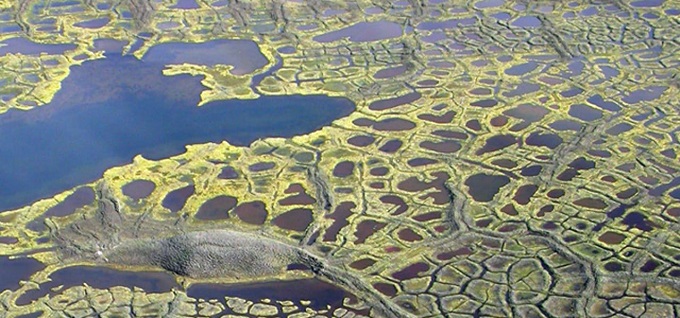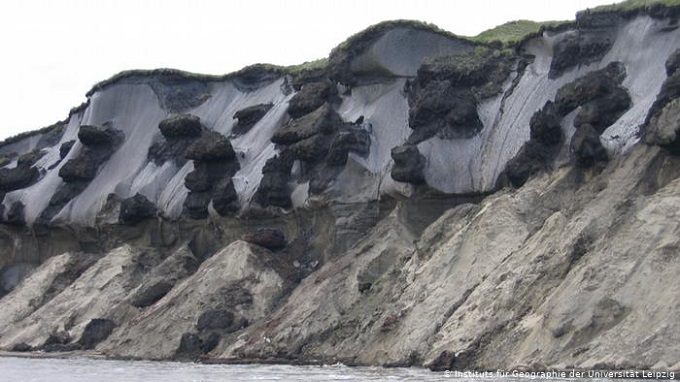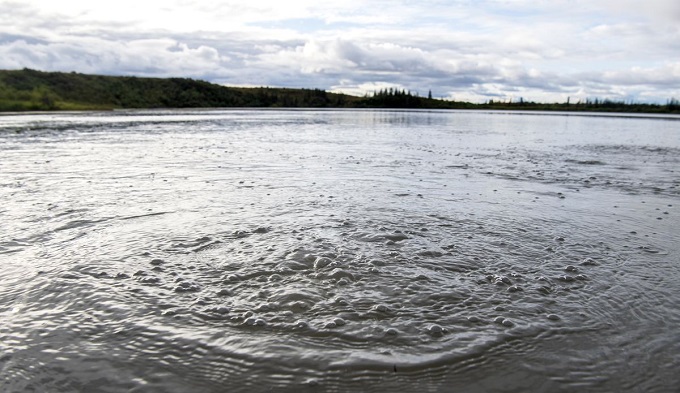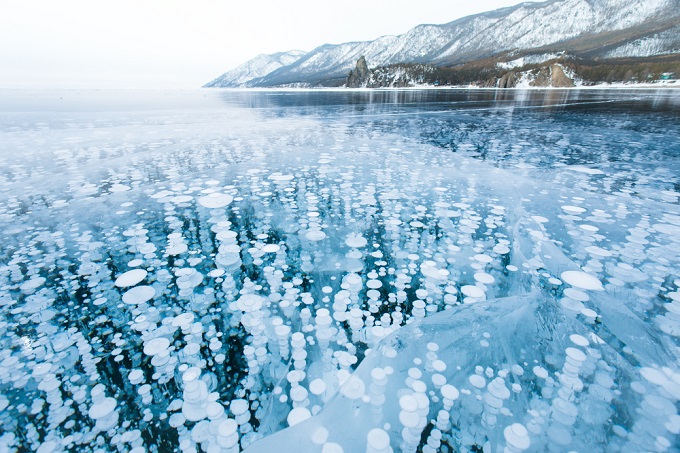Трудовой кодекс

Millions of thermokarst lakes became sources of methane to the study of which in the world so far no one has paid much attention.
The ice has broken, ladies and gentlemen
Yes, and the very phenomenon of thermokarst formations until recently was not of a mass nature in the zone of distribution of long-term frozen rocks, and therefore, apparently, did not attract the attention of scientists.
Initially, there was not much melt water on the glaciers in the permafrost zone and it was successfully hidden from the eyes by the plant layer covering the glaciers. Actually, this plant layer lived due to melting ice. But with the warming of meltwater, it became more and more and it began to fill in the recesses and cavities in the ice, forming small lakes.

Like the peaks of icebergs, small lakes on the surface of glaciers hid huge reserves of water beneath cracks, ravines and other glacial cavities.
As you know, liquid water usually has a positive temperature, no matter how cold it may seem to touch. And water that flows quickly does not turn into ice even at very low temperatures. This is the secret of the origin of thermokarst lakes, caves, craters, craters and other cavities that we see on the surface of the ice.
Liquid water not only melts the ice surrounding it, but also “sharpens” it, just as moving water polishes stones.
Dark side of ice
The environment in which thermokarst cavities arise is ice. But the glacier’s body itself is a very complex structure, which is also in constant motion. Cracks are formed at the bends and turns of the glacier bed in moving ice. The vegetation layer covering the glacier or soil containing biomass along which the glacier flows into these cracks.
As a result of these processes, today almost all of the ice in the permafrost zone is similar to a raisin roll, where ice is a roll, and raisins are interspersed with biomass soil.

The dark, stone-like blotches in the body of the glacier are frozen soil that has entered the body of the glacier during its movement. This frozen soil consists predominantly of non-decayed vegetation remains containing large amounts of carbon.
So, the permafrost structure is a bed of a glacier containing frozen biomass of the preglacial period, ice laden with pieces of frozen biomass, and the upper vegetative layer entirely consisting of non-decayed remains of postglacial flora and fauna.
This is the environment in which thermokarst is to be formed.
Natural methane generator
It all starts with small lakes that appear on the surface of the ice in the warm season. In these lakes, the process of decomposition of organics accumulated on the surface of the glacier begins. When plant residues rot, greenhouse gases are released into the atmosphere.
Greenhouse gases contribute to global warming, but in the case of decay of organic matter in the permafrost zone, this is not even the worst.
Another thing is scary: when organics rot, a lot of heat is always released, which is detrimental to permafrost. On the one hand, greenhouse gases are emitted, and on the other hand, a heated rotting biomass melts new ice around itself, which, as I said above, is like raisins filled with new intersperses of biomass. That is, the new fuel for decay.
Thus, a chain reaction starts: the decay of organic matter releases heat, under the influence of which ice melts intensively and exposes new reserves of organic matter, which immediately begins to decompose, releasing new heat.
Where so much methane comes from
In some thermokarst reservoirs, rotting is so intense that the surface of the lake seems to be boiling from the abundance of methane emitted.
This unusual occurrence was observed by water systems ecologist from the University of Alaska at Fairbanks Katey Walter Anthony on Esieh Lake in Alaska.

Esieh Lake releases 2,000 kilograms of methane per day into the planet’s atmosphere. But it’s a mistake to think that methane is produced in the polar reservoir only in the warm season, which does not last long here.
As I said, during the decomposition of biomass a lot of thermal energy, is released, which is accumulated by water and the rotting mass itself. Therefore, the process of generating greenhouse gases for a long time does not stop in such reservoirs even after a solid ice cover forms on the surface of the lake.

It is possible that the process of greenhouse gas formation in decaying biomass does not stop as long as the surrounding water remains liquid.
Meet: the era of a new climate
The new climate looks at us through the eyes of Arctic lakes. The new climate looks at us through the thickness of glaciers, which modern science does not even call glaciers, applying to them the old definition of Prince Kropotkin "permafrost".
Холод тоже оказался довольно надежным носителем информации. Особенно холод древних ледников, которые донесли до наших времен очень многое, из того, чего мы пока еще не знаем.
The definition of "permafrost" puts our vigilance to sleep.
Even if the permafrost is not so eternal, we think, it still cannot disappear instantly, having existed for tens of thousands of years. Enough for our age, people frivolously believe.
It is not so cold on the Arctic shores today because they lack solar heat. Think of dinosaurs and mammoths - they had enough solar energy to live in high latitudes. Yes, the ratio of light to darkness is not at all in favor of light. But in the summer months, the sun here not only shines, but also warms around the clock. So the annual balance of solar energy entering the northern latitudes is not so bad.
The current climate in the Arctic is unnaturally cold. It didn’t become so because the Sun had become much worn out since the time of the dinosaurs and began to give less heat to the Earth, but because the floating ice of the Arctic Ocean was thrown onto land. This event greatly cooled the climate of the northern hemisphere.
But the sun here shines and warms, just like in the days of the dinosaurs. Therefore, the process of returning to a normal climate takes place with great acceleration: the less ice remains that brought cold here, the warmer it becomes and the faster the remaining ice melts under the influence of solar heat.
And the thermokarst destruction of the ice cover and the decomposition of biomass, launched by the power of solar energy, are just additional mechanisms that accelerate global warming.



